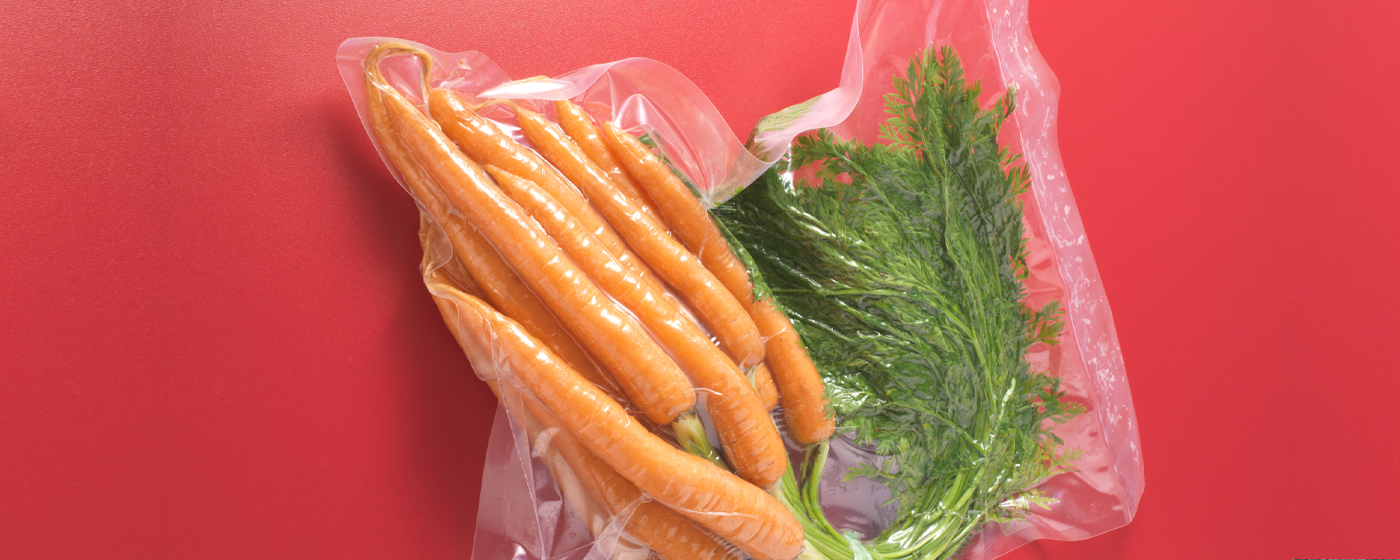Preserving food in a vacuum
In the 17th century, Denis Papin conducted the first experiments with preserving food in a vacuum, although this procedure was first used in the food industry in the 20th century. The technique has evolved toward other uses over the last twenty years or so, and is now associated with culinary techniques, such as modified atmosphere packaging and cooking food in a vacuum.
First trials in the 17th century, but first application only in the 20th century
In the 17th century, Denis Papin carried out new research into preserving food. He began experimenting with vacuum pump technology and managed to keep an apple fresh for several months using vacuum packaging. Following up on this work, he published his first essay, Les Nouvelles expériences sur le vide. At the time, there were few known physical procedures for preserving food and it was not until 1920 in the United States that the first pieces of vacuum-packed meat became available.
Preserving food in a vacuum guarantees freshness - but watch out for anaerobic germs!
Vacuum packaging is a procedure designed to preserve solid or liquid foodstuffs in an air vacuum, for varying lengths of time depending on the products. In fact, all foodstuffs deteriorate to the point of becoming inedible. This deterioration can be caused by micro-organisms, most of which need oxygen to breathe and develop. If the amount of oxygen is reduced, their growth is slowed down. Vacuum packing reduces the amount of air and therefore the amount of oxygen diminishes proportionally. This greatly reduces the risk of alteration due to oxidisation and the proliferation of aerobic bacteria that develop in the presence of air or oxygen. However, the vacuum promotes the development of anaerobic bacteria such as the botulinum toxin. Cold inhibits anaerobic germs, so it is a necessary part of the process of preserving food in a vacuum.
After extracting the ambient air from the bag containing the food to be preserved, a new automated technique can be used to introduce a certain volume of an inert gas blend and then hermetically seal the bag. The gas prevents the food from being crushed. The main gases used to make modified atmospheres are nitrogen N2 and carbon dioxide CO2. Adding oxygen O2 helps retain the colour of red meat. This modified atmosphere packaging is also associated with low temperature storage.
It goes without saying that, the bags need to be sealed hermetically.to protect the food from external influences as well as to prevent odours from escaping.
Vacuum cooking
Preserving food in a vacuum is above all a technique used in the agri-food industry and in professional kitchens. The vacuum technique has given rise to a new way of cooking, vacuum cooking. This technique enables easy, precise temperature control. The food is sealed in a bag then placed in a water bath or a steam oven set to maintain a stable core temperature, that is, the optimal cooking temperature measured in the middle of the food. The product is therefore ready to serve. Thanks to this innovation, today’s chefs, particularly those specialising in modernist or molecular cuisine, can be sure of achieving an even result with all their cooked preparations.
ROUX,Jean-L.,1994.Conserver les aliments.Lavoisier TEC.
SCHÄRER,Martin R., BUTTY,Pierre, RABOUD-SCHÜLE Isabelle, STÄUBLE TERCIER, Nicole. 2003. Cuisiner Manger Acheter Digérer. Vevey : Alimentarium.
MYHRVOLD Nathan, YOUNG Chris, BILET Maxime, 2011. Modernist cuisine, techniques et équipements. Taschen.
Denis Papin, de la marmite au mythe.2001. Witkowski Nicolas. La recherche. Date de consultation 7.11.2015: http://www.larecherche.fr
Le sous vide en restauration.DEZAVELLE Jean-Pierre. Lycée hôtelier ademas. Date de consultation : 7.11.2015: http://www.lycee-hotelier-adumas.com




